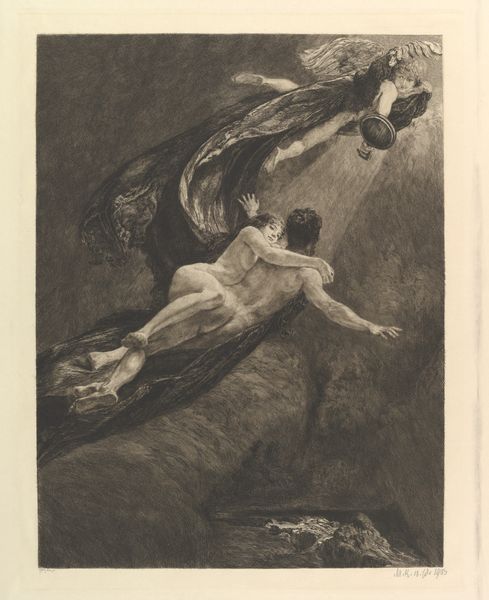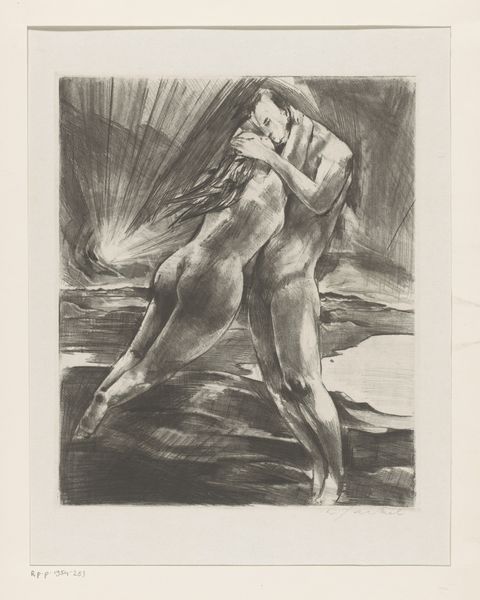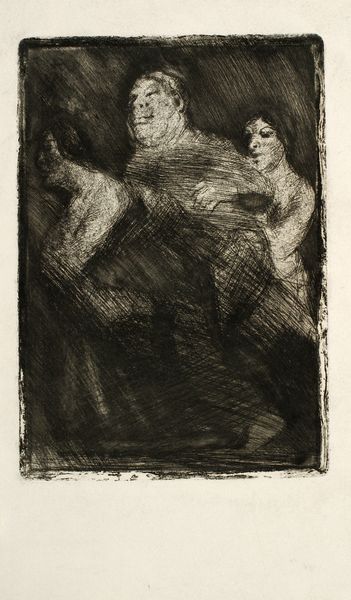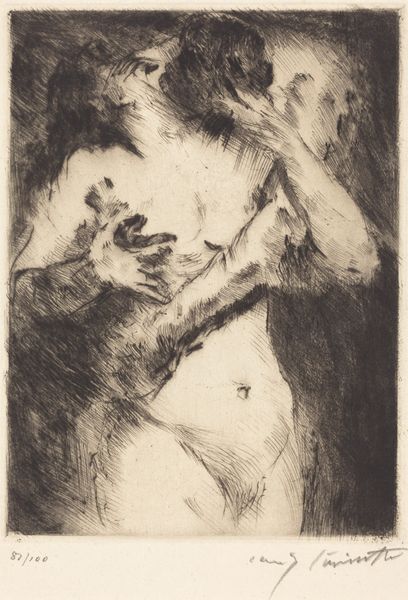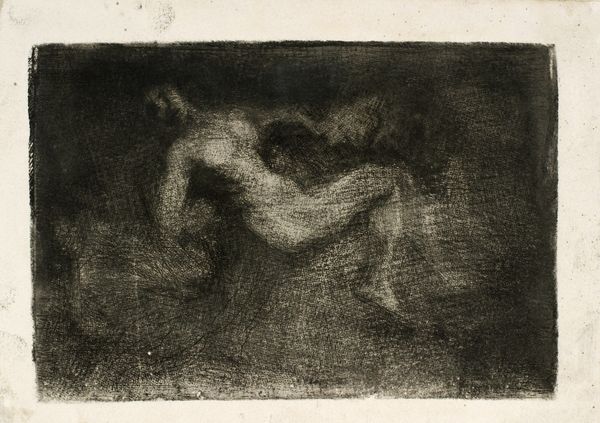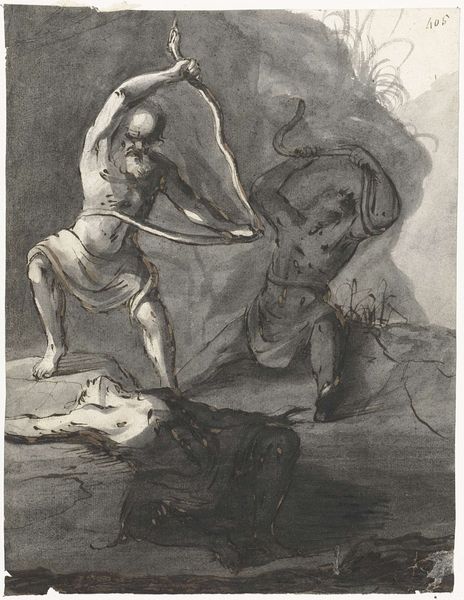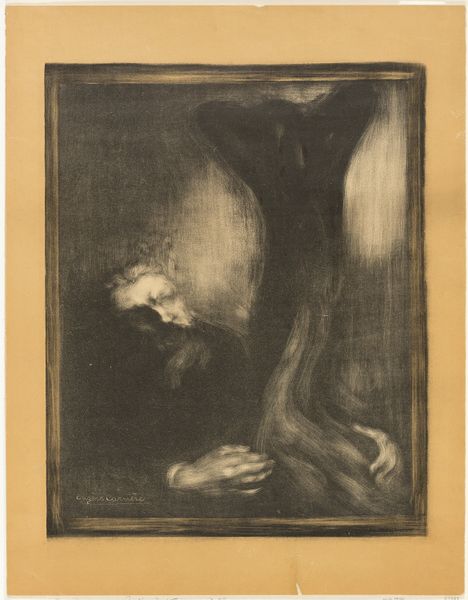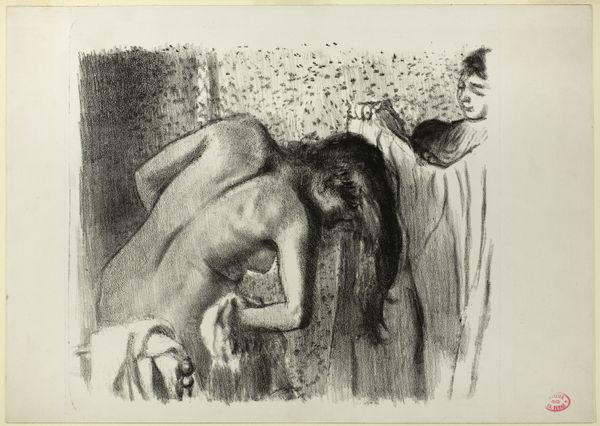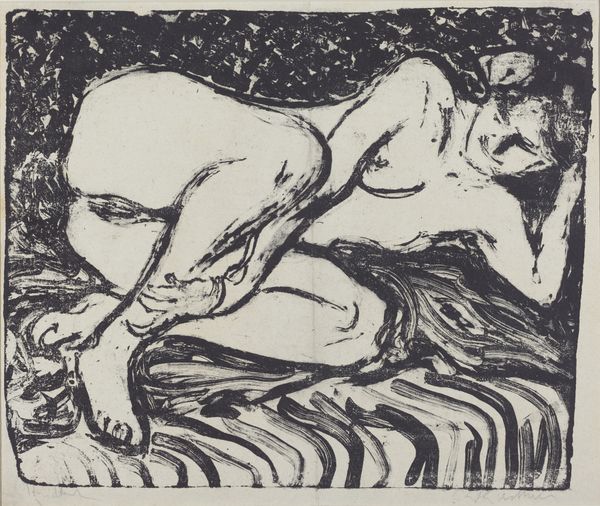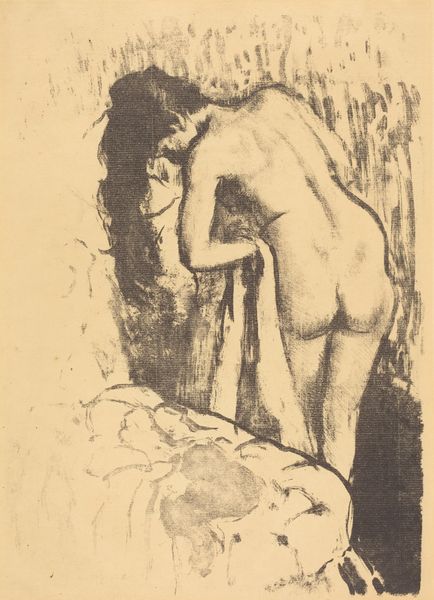
drawing, print, etching, ink
#
pencil drawn
#
drawing
#
narrative-art
# print
#
etching
#
pencil sketch
#
figuration
#
ink
#
pencil drawing
#
symbolism
#
history-painting
Dimensions: plate: 18.9 x 12 cm (7 7/16 x 4 3/4 in.) sheet: 33 x 25.2 cm (13 x 9 15/16 in.)
Copyright: National Gallery of Art: CC0 1.0
Editor: So, this is Odilon Redon’s "Cain and Abel," an etching from 1886. It’s hard to ignore the raw emotion pouring out of this scene. I mean, just look at the figures contorted in fury and despair! How do you interpret this work, with its chaotic composition? Curator: Ah, Redon! Always a shadowy mirror to the soul. It’s a primordial scene, rendered with a feverish energy, don’t you think? The stark blacks and whites amplify the drama, like a stage lit for tragedy. Think of the weight of that act – fratricide, the ultimate betrayal. What do you see in the stark contrast, almost vibrating off the page? Editor: Well, it definitely feels… unsettling. Almost dreamlike, but also visceral. Is he making a comment on human nature, this inherent capacity for violence? Curator: Precisely! Redon often delved into the darker recesses of the human psyche, and here he presents us with a potent symbol of our internal struggles. It’s not just a historical narrative, but an exploration of envy, rage, and the shattering of innocence. Does the composition – that almost frenzied energy – speak to that turmoil for you? Editor: Yes, definitely. It's not static at all; it feels like everything is on the verge of collapsing. I initially saw the violence, but I hadn’t really thought about it being this deep dive into what makes us tick…or maybe explode. Curator: Indeed! And isn’t that the beauty of Redon? He challenges us to confront uncomfortable truths about ourselves. What a murky pond is humanity? Editor: It's definitely given me a lot to ponder – far beyond just the visual elements! Curator: Agreed. A dark fable told in shades, isn't it?
Comments
No comments
Be the first to comment and join the conversation on the ultimate creative platform.
